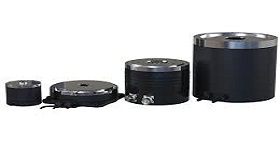Synchronous motor
Synchronous motor and induction motor is a common ac motor. Features: during steady operation. There is a constant relationship between rotor speed and grid frequency, n=ns=60f/p, and ns becomes synchronous speed. If the frequency of the grid is constant, the speed of the synchronous motor in steady state is constant, which is independent of the load. Synchronous motor is divided into synchronous generator and synchronous motor. In modern power plant, the main motor is synchronous motor.
Establishment of main magnetic field: the field winding is connected with the dc field current, and the field magnetic field with polarity is established. That is to say, the main magnetic field is established.
Current-carrying conductor: the three-phase symmetric armature winding acts as a power winding, acting as a carrier for either the induced potential or the induced current.
Cutting motion: the prime motor drags the rotor to rotate (to input mechanical energy to the motor), and the field in polar phase rotates with the shaft and cuts the stator phase windings (equivalent to the conductor reverse cutting field of the winding).
Alternating potential generation: due to the relative cutting motion between the armature winding and the main magnetic field, the armature winding will induce the three-phase symmetric alternating potential with periodic change in size and direction. The ac power supply can be provided through the lead wire.
Interchangeability and symmetry: the polarity of the induced potential is changed due to the polarity of rotating magnetic field. Because of the symmetry of the armature winding, the three-phase symmetry of the induced potential is guaranteed.



